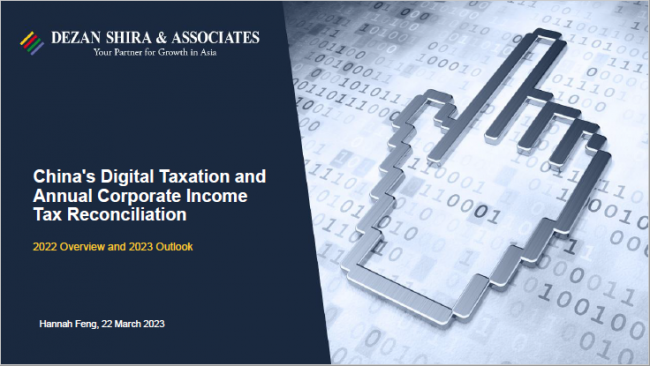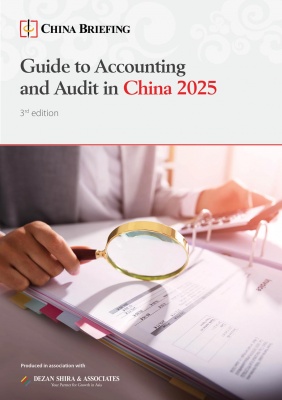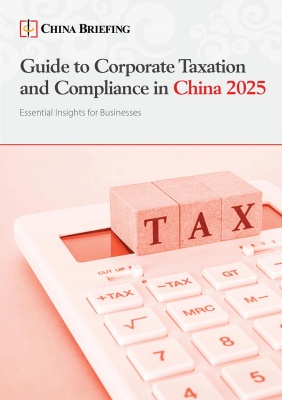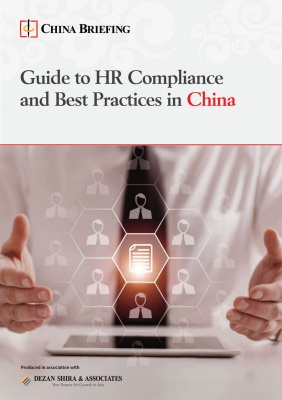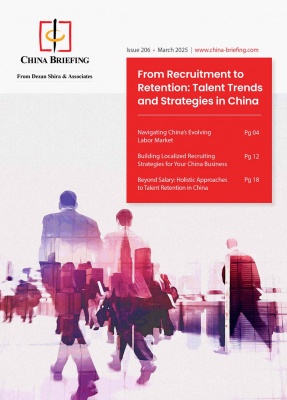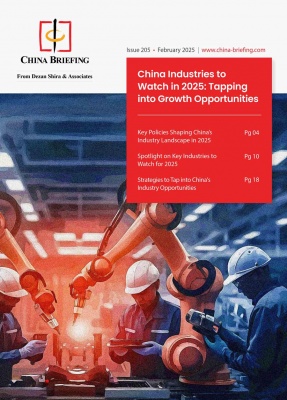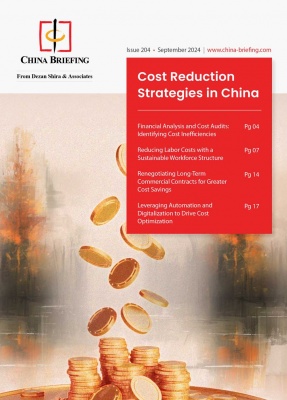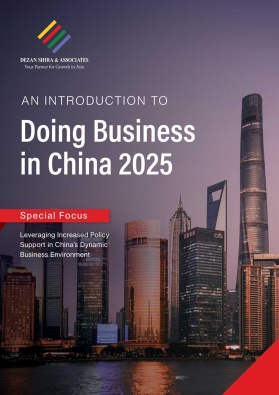US-China Relations in the Trump 2.0 Era: A Timeline
This timeline was created on January 21, 2025, and was last updated on April 25, 2025.
On January 20, 2025, Donald Trump was sworn in as the 47th president of the United States. His return to the White House signals a shift in US-China relations. Building on the aggressive stance of his first term, Trump 2.0 is expected to challenge China with a more transactional and unpredictable approach. The economic, security, and diplomatic consequences of his policies will not only reshape US-China ties but also influence the broader global geopolitical landscape.
Trump is expected to intensify the trade confrontations that defined his first administration, potentially escalating tariffs and sanctioning Chinese companies in an effort to achieve greater economic self-sufficiency. However, his focus on America’s immediate interests may leave little room for long-term strategic alliances, making his policy more difficult to predict. As Trump looks to navigate his second term amid a tumultuous political backdrop, China will need to adapt quickly to a US president who is more focused on leveraging short-term victories than on pursuing traditional diplomatic strategies.
This timeline will track the key developments in US-China relations under Trump 2.0, examining the potential consequences for China’s economy and other key aspects, while offering insights into the strategies that both Washington and Beijing will adopt in the face of a renewed geopolitical rivalry.
Previously, China Briefing tracked and documented the US-China trade war in the Trump era and the evolution of US-China relations in the Biden Era.
US-China relations in the Trump 2.0 era
April 22 to 24, 2025: Trump administration signals tariff easing in coming weeks dependant on deal, but negotiations with China still not underway
The Trump administration has indicated that it may reduce the tariff rate on China in the near future, but that this decision would depend on potential negotiations and a tarde
President Trump told reporters on Tuesday that the 145 percent tariff on Chinese goods is likely to come down. According to CNN, Trump told reporters that “145% is very high and it won’t be that high,” and that “ It’ll come down substantially. But it won’t be zero.”
The statement follows comments made by the US Treasury Secretary Scott Bessent, who told a group of investors at a closed-door meeting earlier that day, “No one thinks the current status quo is sustainable, at 145 and 125 [per cent], so I would posit that over the very near future, there will be a de-escalation.”
On Wednesday, Trump told reporters that he would announce new tariff rates on trading partners including China over the next few weeks, but that the tariffs rates “depends on them”. He also added that if the US does not strike a deal with a company or country, then “we’re going to set the tariff.”
The Trump administration had also indicated that the US were currently in talks with China over a potential trade deal. Also on Wednesday, he told reporters that the US was “actively” talking to China. However, this has been refuted by both China and members of Trump’s team. Also on Wednesday, the Treasury Secretary told reporters that negotiations had not yet begun. However, an anonymous White House official told Politico that the two statements are not contradictory, clarifying that while there are “always active conversations” and “open lines of communication” between the US and China, the Treasury Secretary did not want to overstate the level of progress that has been made on negotiations.
Speaking at a regular press conference on Thursday, Chinese Foreign Ministry Spokesperson Guo Jiakun also refuted that any discussions were taking place, telling reporters that “None of that is true. For all I know, China and the U.S. are not having any consultation or negotiation on tariffs, still less reaching a deal.”
At a press conference a day earlier, Guo said that China’s “doors are open, if the U.S. wants to talk”, but warned that continued pressure on China would not lead to a deal, stating that “to keep asking for a deal while exerting extreme pressure is not the right way to deal with China and simply will not work”.
On Wednesday, the Financial Times reported that Trump was considering exempting car parts from the China tariffs. However, car parts would still be subject to the 25 percent levy on all auto imports to the US that Trump imposed in early April.
April 21, 2025: US Commerce Department imposes steep tariffs on Chinese-made solar cell imports from Southeast Asia
On Monday, the US Department of Commerce (DoC) announced its final determinations in anti-dumping (AD) and countervailing duty (CVD) investigations into solar cells from Cambodia, Malaysia, Thailand, and Vietnam. The investigations were launched in May 2024 under the Biden administration following a petition from First Solar, Inc., Hanwha Q CELLS USA, Inc., and Mission Solar Energy LLC.
Preliminary CVD and AD rates were implemented in October and November 2024.
According to the DoC, the CVD investigation found that “imports of solar cells from Cambodia, Malaysia, Thailand, and Vietnam are being dumped into the U.S. market and receiving countervailable subsidies”. The investigation alleges that Chinese solar companies with operations in these four countries are receiving subsidies from China.
The AD and CVD rates range widely between companies and countries. For instance, CVDs range from a low of 14.64 percent on imports from Hanwha Q CELLS in Malaysia to 3,403.96 percent on imports from four companies in Cambodia. According to Reuters, the combined AD tariff and CVDs on Jinko Solar products from Malaysia were subject to one of the lowest rates at 41.56 percent, while Trina Solar’s products from Thailand are subject to a rate of 375.19 percent.
The International Trade Commission (ITC), a separate federal agency from the DoC, will have until June 2, 2025, to make its final determination on harm caused to US industries by the alleged dumping activities and subsidies. The final AD tariffs and CVD rates will be imposed if the ITC affirms the DoC’s findings.
US tariffs on Chinese solar cells date back to 2012, when the Obama administration imposed duties of approximately 36 percent on Chinese solar products. As a result, direct imports from China to the US have sharply declined. In response, Chinese manufacturers have attempted to bypass these tariffs by shifting production to Southeast Asian countries not subject to the duties. If the new tariffs are finalized by the ITC, they are expected to significantly hinder Chinese companies’ ability to access the US market. According to the International Trade Administration (ITA), the US imported $11.9 billion worth of solar cells from Cambodia, Malaysia, Thailand, and Vietnam in 2023.
April 17, 2025: US to implement fees on Chinese vessels docking at US ports
The US Trade Representative (USTR) has announced it will begin to implement fees on Chinese vessels docking at US ports, as part of an effort to counter what the US claims are “China’s unreasonable acts, policies, and practices to dominate the maritime, logistics, and shipbuilding sectors.”
These fees mark a continuation of initiatives to strengthen the US shipbuilding industry, which began during the Biden administration. The decision aligns with an executive order (EO) signed by President Trump on April 9, declaring that it is the policy of the US “to revitalize and rebuild domestic maritime industries and workforce to promote national security and economic prosperity.”
According to the EO, “the United States constructs less than one percent of commercial ships globally, while the People’s Republic of China (PRC) is responsible for producing approximately half.”
In accordance with this policy, the EO directed the USTR to “take appropriate steps to enforce any restriction, fee, penalty, or duty imposed pursuant to such actions” related to China’s shipbuilding practices.
The fees follow a Section 301 investigation initiated exactly one year earlier under the Biden administration. The investigation examined “longstanding efforts to dominate the maritime, logistics, and shipbuilding sectors, cataloguing the PRC’s use of unfair, non-market policies and practices to achieve those goals.” Its findings, released on January 16, 2025, concluded that “China’s targeting of the maritime, logistics, and shipbuilding sectors for dominance is unreasonable.”
A public hearing on proposed actions stemming from the investigation’s findings was held by the USTR on March 24 and 26.
The fees will be introduced in two phases.
The first phase will start after 180 days from April 17. A US$0 fee will be applied in the interim 180 days. After this period, the following fees will be phased in:
- Fees on vessel owners and operators of China: Charges will be based on net tonnage (NT) per US voyage, starting at US$50/NT and increasing incrementally to US$140/NT over the next three years.
- Fees on operators of Chinese-built ships: Charges will be based on NT or containers. For arriving vessels, fees will increase from US$18/NT to US$33/NT. For each container discharged, fees will rise from US$120 to US$250 over the next three years.
- Fees on foreign-built vehicle carriers: To incentivize the use of US-built car carriers, operators of non-US-built vessels will be charged US$150 per Car Equivalent Unit (CEU) of capacity.
Phase two will begin after three years:
- To encourage the use of US-built liquified natural gas (LNG) vessels, the US will begin imposing limited restrictions on the transportation of LNG by foreign vessels. These restrictions will gradually increase over a 22-year period.
Further actions to limit China’s shipbuilding industry will likely follow. The EO also called for the USTR to explore additional steps to support the US maritime industry, including potential tariffs on ship-to-shore cranes and other cargo handling equipment. The USTR is currently soliciting public comments on these proposals.
In response to the April 17 announcement by the USTR, China’s Ministry of Commerce (MOFCOM) stated that China is “strongly dissatisfied and firmly opposed” to the decision. Speaking to the media, a MOFCOM spokesperson said the move is unilateralist and protectionist, calling it a discriminatory, non-market approach that violates WTO rules, harms Chinese companies, disrupts supply chains, and undermines the rules-based international trade system. The spokesperson also noted that during the hearings, most industry representatives, including international voices, opposed the measure, but that the US still “insisted on taking unilateral action and released the relevant restrictive measures.”
The spokesperson also warned that China will closely monitor developments and “take necessary measures to safeguard its own rights and interests”, suggesting possible countermeasures.
April 11, 2025: US grants tariff exemption for smartphones, computers, and other electronics arriving from China
In an executive order signed on Friday, Trump exempted a range of electronic products and components from the reciprocal tariffs, including computers (including parts and accessories for their assembly), smartphones, flat panel displays, SSDs, computer monitors, various types of semiconductors, and integrated circuits. The exemptions are effective retroactively from April 5.
Currently, the only US reciprocal tariff still in effect is the 125 percent tariff on Chinese goods, meaning the exemption is intended for these products arriving from China.
While these goods are exempted from the 125 percent reciprocal tariff, the 20 percent tariff that Trump imposed on China in February will remain in place on these goods. Moreover, the US, under the Biden administration, placed a 50 percent tariff on Chinese semiconductors, taking effect in 2025.
Trump has also warned that the exemption will not be permanent, stating that semiconductors and the electronics supply chain will be looked at in the upcoming National Security Tariff Investigations.
April 11, 2025: China raises tariff on US goods to 125%, says it will no longer respond to US tariff hikes
The State Council Tariff Commission announced on Friday that it will further raise the tariff on US imports from 84 percent to 125 percent, matching the reciprocal tariff rate Trump imposed on China on April 9. The new tariff rate will take effect on April 12.
The announcement also once again stated that the US’s imposition of abnormally high tariffs on China “seriously violates international trade rules” and is an act of “unilateral bullying and coercion”.
Notably, the announcement also stated that, given that importing goods from the US to China will not be viable at the current tariff rate, China will no longer respond to any further tariff hikes from the US side.
However, speaking at a regular press conference on Friday, Foreign Spokesperson Li Jian repeated the line that “China will fight to the end” if the US continues its escalations and that “China does not wish to fight, but it is not afraid to fight.” He also called for resolving the issue through dialogue and negotiation “based on equality, mutual respect, and reciprocity”.
April 10, 2025: White House clarifies China tariff rate now 145%
A White House spokesperson clarified to CNBC on Thursday that the 125 percent reciprocal tariff rate imposed on China would be in addition to the 20 percent tariff imposed on China prior to April 2, bringing the final tariff rate to 145 percent.
Moreover, the CNBC reporter found that the 145 percent tariff is the minimum tariff, meaning it will be levied on top of any other existing tariffs. This would include the Section 301 tariffs imposed during Trump’s first term, as well as the tariffs imposed by Biden on electric vehicles, solar panels, semiconductors, and other products.
Trump’s initial executive order imposing reciprocal tariffs on global trade partners, including China, exempts certain items from the reciprocal tariffs, such as the 25 percent levy on steel and aluminum implemented in February. However, in practice, this would not apply to China as the Biden administration already imposed a 25 percent duty on these products coming from China in 2024.
April 9, 2025: China promises policy support to help weather impacts of trade war
At a symposium with economic experts and entrepreneurs on April 9, Chinese Premier Li Qiang emphasized the importance of strengthening economic efforts in the second quarter and beyond amid the challenges posed by the escalating trade war with the US.
Li pledged more proactive and impactful macroeconomic policies, calling for the swift implementation of existing measures and the timely introduction of new, targeted stimulus policies to counter external uncertainties. He stressed the need to reinforce the domestic economic cycle, viewing the expansion of domestic demand as a long-term strategy.
Key priorities include stabilizing employment, increasing household incomes, and boosting service consumption alongside efforts to modernize consumer goods. Li also highlighted the importance of integrating technological and industrial innovation to enhance the quality and responsiveness of supply.
To support businesses, Li called for the full implementation of supportive policies, improved law enforcement practices related to enterprises, and concrete solutions to persistent issues such as delayed payments and expensive or difficult financing. The goal, he said, is to create a better environment and policy support system to help companies overcome development challenges.
April 9, 2025: US further raises de minimis duty to 120%
In the executive order signed on Wednesday raising the reciprocal tariff on China to 125 percent, the Trump administration again raised the duties and fees for de minimis parcels arriving from the Chinese mainland and Hong Kong. The new duties are as follows:
- An ad valorem tariff of 120 percent on the declared value of the parcel (up from 90 percent); or
- A per-item rate of US$100 (up from US$75) from May 1, rising to S$200 (up from US$150) from June 1.
April 9, 2025: US further raises tariff on China to 125%, pauses reicprocal tariffs on other countries
In a post on Truth Social on Wednesday, President Trump announced that the tariff rate on China will raise further to 125 percent, effective immediately. The action comes on the same day as China raised the tariff on US goods to 84 percent, matching the US’s previous tariff rate that also came into effect on April 9.
In the same post, Trump announced a 90-day pause in the reciprocal tariffs placed on all other countries, with the 10 percent minimum base tariff to remain in place for all countries and regions.
While China has yet to announce a countermeasure to the latest escalation, speaking at a regular press conference on April 10, Foreign Ministry spokesperson Lin Jian said that “there are no winners in tariff wars and trade wars” and added that “China does not want to fight, but is not afraid of fighting”. He also reiterated that China will “fight to the end” should the US continues its escalations.
April 9, 2025: China retaliates with 84% tariff on US goods
China’s Ministry of Finance (MOF) has retaliated against the US’s imposition of a 104 percent tariff by raising the duty rate on US goods from 34 percent to 84 percent. The tariff hike comes on the same day as the US’s 104 percent tariff rate on Chinese goods took effect and matches the 84 percent “reciprocal” tariff announced by the Trump administration on April 8.
In its announcement, the MOF called Trump’s escalating tariffs “a mistake on top of a mistake” that “seriously infringes on China’s legitimate rights and interests and seriously damages the rules-based multilateral trading system”.
The new tariff rate will take effect on April 10. As of the time of writing, the US has yet to respond to China’s latest countermeasure.
April 9, 2025: Chinese Commerce Ministry places 12 US companies on export control list and 6 on unreliable entities list
On the same day Trump’s 104 percent tariff on Chinese goods took effect, the Chinese Ministry of Commerce (MOFCOM) placed an additional 12 American companies on the export control list and six on the unreliable entities list.
On April 4, MOFCOM placed 16 American companies on the export control list and 11 on the unreliable entities list (see April 4 entry).
The companies placed on the export control list include American Photonics, Novotech, Inc., Echodyne, and Firestorm Labs, Inc., all of which produce advanced technologies with potential (or explicit) military applications. According to MOFCOM, these companies were placed on the list “in order to safeguard national security and interests and fulfill international obligations such as non-proliferation”.
Meanwhile, the six companies on the unreliable entities list include Shield AI, Inc., Sierra Nevada Corporation, Cyberlux Corporation, and Hudson Technologies Co. Four of the six companies were already placed on the export control list on April 4.
Companies on the export control list will not be able to buy dual-use items from China, while the companies on the unreliable entities list will be prohibited from engaging in import and export activities related to China and from making new investments in China.
April 9, 2025: Trump raises tariff on China to 104%, raises de minimis duty to 90%
In an executive order signed on Tuesday, President Trump raised the reciprocal tariff rate on China from 34 percent to 84 percent, bringing the final rate to 104 percent. The additional 50 percent rate was implemented after China did not repeal the 34 percent duty it placed on US goods by April 8, as Trump had demanded. The 104 percent tariff, along with the reciprocal tariff rates placed on other countries, came into effect on Wednesday, April 9.
In addition to the higher flat tariff rate, the executive order also raised the duty rate and fees on de minimis shipments (small parcels for individual consumption under US$800 in value). The duty on these parcels had originally been raised to 30 percent of their value or a flat rate of US$25 (rising to US$50 from June 1) when Trump removed the de minimis exemption on parcels arriving from the Chinese mainland and Hong Kong on April 2. The rates, effective May 2, will now be as follows:
- A 90 percent ad valorem duty (up from 30 percent); or
- A flat duty of US$75 per postal item from May 2 (up from US$25), rising to US$150 per item from June 1 (up from US$50).
Speaking at a regular press briefing on Tuesday, Foreign Ministry Spokesperson Lin Jian stated that “China deplores and rejects” the suggestion of an additional 50 percent tariff and said that the US was engaging in “economic bullying”. He also stated that if the US is “determined to fight a tariff and trade war, China’s response will continue to the end”.
April 8, 2025: War of words escalates as Trump threatens additional 50% tariff on China
The Chinese government has pushed back against a threat from Donald Trump to further increase the tariff rate on Chinese goods.
In a post on Truth Social on Monday, Trump threatened an additional 50 percent tariff on Chinese goods if China does not withdraw the 34 percent tariff announced in retaliation for Trump’s reciprocal tariffs on China. The additional 50 percent tariff would be implemented from April 9 and would bring the final tariff rate on China to 104 percent.
In a message posted on its official website on Tuesday morning, a spokesperson for China’s Ministry of Commerce said that China “firmly opposes” the US’s threat of an additional 50 percent tariff, and that if it goes ahead with this escalation, “China will resolutely take countermeasures to safeguard its own rights and interests”. The spokesperson also called the threat “a mistake on top of a mistake” and an attempt by the US to “blackmail” China, and stated that China will “fight to the end”. However, the spokesperson also called on the US to “properly resolve differences with China through equal dialogue on the basis of mutual respect”.
April 4, 2025: Trump signs executive order delaying implementation of TikTok ban
Trump signed a second executive order on Friday delaying the ban on TikTok for another 75 days, one day before the ban was set to go into effect. This is the second executive order signed by Trump to delay the ban-or-sell deadline that was imposed by the TikTok divestment bill, which was signed into law by former President Joe Biden in April 2024.
According to reports, TikTok’s owner ByteDance was close to reaching a deal with the Trump administration to sell the US portion of TikTok, as required by the bill. However, this deal had been scuppered by the announcement of an additional 34 percent reciprocal tariff on Chinese goods on April 2.
It now appears likely that the Chinese government will seek to use the selling of TikTok as leverage in any potential trade negotiations with the US.
April 4, 2024: China’s market regulator launches antitrust probe into DuPont
In a brief statement on its website, China’s State Administration for Market Regulation (SAMR) announced it has initiated an investigation into DuPont China Group Co., Ltd., the Chinese subsidiary of the American chemicals giant DuPont, for suspected violations of China’s Anti-Monopoly Law. While SAMR did not provide any information on the basis for the investigation into DuPont, according to a notice posted on US Securities and Exchange Commission (SEC) website, the probe is in relation to DuPont’s Tyvek business. Tyvek is a trademarked synthetic polyethylene material that is used widely in a variety of civilian and military settings.
According to reporting by Chinese media, DuPont has held a monopoly over this material and sought to use litigation to suppress smaller companies in China that have developed new technologies with similar performance.
The announcement of this probe is likely timed to act as a response to the 34 percent additional reciprocal tariff that Trump imposed on China on April 2. After Trump’s initial 10 percent tariff placed on China in early February, SAMR launched an investigation into Google for suspected violations of the Anti-Monopoly Law.
April 4, 2025: China retaliates with 34% duty on all US goods, export curbs, and sanctions on US companies
China’s State Council Tariff Commission in an announcement on Friday placed an additional 34 percent tariff on all goods entering the country from the US. Any current bonded and tax reduction and exemption policies will remain in place.
The new tariff will take effect from April 10, 2025. However, goods that have been shipped prior to April 10 and arrive in China between April 10 and May 13, the new rate will not apply.
This rate exactly matches the 34 percent tariff imposed on China by the Trump administration on April 2. However, the rate applied to China is in addition to the preexisting 20 percent rate imposed by Trump, meaning the final tariff rate on China will be 54 percent when the reciprocal tariff goes into effect on April 9.
The 34 percent rate that China has applied on US goods will also be on top of any other existing tariffs for the applicable goods.
On the same day, China’s Ministry of Commerce (MOFCOM) and Customs Administrations placed export restrictions on seven different types of rare earths, namely various derivations of samarium, gadolinium, terbium, dysprosium, lutetium, scandium, and yttrium. A MOFCOM spokesperson stated that these items have “dual-use attributes”, and that the export controls are aimed at “better safeguarding national security and interests and fulfilling international obligations such as non-proliferation”.
MOFCOM also placed 16 American companies on the “export control list” and 11 American companies on the “unreliable entities list”.
The stated motive for this move is “to safeguard national security and interests and fulfill international obligations such as non-proliferation”. The companies placed on the export controls list, which are mostly defense companies, include High Point Aerotechnologies, Sierra Nevada Corporation, Hudson Technologies Co., and Cyberlux Corporation. The companies placed on the unreliable entities list include Skydio Inc., BRINC Drones, Inc., and Red Six Solutions. According to a statement from the MOFCOM spokesperson, these companies have “carried out so-called military and technical cooperation with Taiwan despite China’s strong opposition, seriously undermining China’s national sovereignty, security and development interests”.
Companies included on the export control list will be barred from purchasing certain goods and products from China. Meanwhile, the companies included on the unreliable entities list are prohibited from engaging in import and export activities related to China and may not make any new investments in China.
April 2, 2025: Trump reinstates end to de minimis exemption on Chinese parcels, effective May 2
On Wednesday, the same day the US tariff rate on Chinese imports was raised to 54 percent, President Donald Trump signed an executive order (EO) to once again end the de minimis exemption for parcels originating from the Chinese mainland and Hong Kong.
The de minimis exemption allows low-value packages – those worth under US$800 – to enter the US without customs duties or inspections. According to analysts, roughly four million packages per day entered the US under this exemption in 2024, many of them from Chinese e-commerce companies.
Trump had previously attempted to revoke the exemption as part of his February 1 tariff package but reversed the move within a week. On February 7, the White House issued an amendment delaying the change, following chaos at US logistics centers and customs warehouses. The US Postal Service had also temporarily suspended the acceptance of international parcels from the Chinese mainland and Hong Kong, but quickly reversed course.
The latest executive order claims that “adequate systems” are now in place to assess and collect duties on incoming parcels. As a result, the US will begin imposing duties on small-value packages from the Chinese mainland and Hong Kong starting May 2, 2025.
The Trump administration has justified the move by alleging that Chinese-based shippers use the de minimis channel to engage in deceptive shipping practices. The EO states that some Chinese exporters “hide illicit substances and conceal the true contents” of parcels, avoiding detection due to the limited screening associated with de minimis treatment. The White House has linked this to broader concerns about fentanyl trafficking, which it claims is facilitated in part through these small parcels.
Under the new rules, packages from mainland China and Hong Kong will be subject to the following duties:
- Ad valorem duty of 30 percent of the declared value of the postal item
- Specific duty:
- US$25 per item between May 2 and May 31, 2025
- US$50 per item beginning June 1, 2025
The EO directs the Secretary of Commerce to make an assessment of the potential impact of the order on American consumers and businesses, and provide a recommendation on whether the end of the exemption should also be extended to Macau “to prevent circumvention of this order”.
The end of the exemption is expected to have widespread implications for online retailers such as Shein, Temu, and Amazon, as well as for smaller US businesses that rely on low-cost Chinese imports. Analysts warn that the decision will also affect millions of American consumers by raising prices and causing delays at customs due to backlogs and new inspection protocols.
April 2, 2025 – Trump imposes sweeping tariffs, raising Chinese import duties to 54%
On April 2, 2025, President Donald Trump announced a comprehensive overhaul of US trade policy, introducing significant tariffs on imports from various countries. This “Liberation Day” initiative aims to address perceived trade imbalances and bolster domestic industries.
Key highlights inlcude:
-
Universal tariff: A baseline 10 percent tariff will be applied to all imports entering the United States.
-
China-specific tariffs: Chinese imports will face an additional 34 percent tariff on top of the existing 20 percent, culminating in a total tariff rate of 54 percent.
-
Tariffs on other nations: Vietnam, Thailand, Cambodia, the European Union, and Japan will be subject to new tariffs of 46 percent, 36 percent, 49 percent, 20 percent, and 24 percent, respectively.
-
Sector-specific tariffs: Additional duties of 25 percent will be imposed on foreign automobiles, car parts, steel, and aluminum.
The universal 10 percent import tariff is set to take effect on April 5, 2025. The additional “reciprocal” tariffs targeting specific countries will commence on April 9, 2025. The additional 25 percent tariff on foreign automobiles, car parts, steel, and aluminum would go into effect at midnight, April 3, 2025.
The announcement has led to significant volatility in global financial markets. Analysts express concerns about potential inflationary pressures and disruptions to international trade. While supporters argue that these measures will revitalize American manufacturing and reduce reliance on foreign goods, critics warn of escalating trade tensions and possible retaliatory actions from affected nations. As the situation develops, stakeholders across various sectors are advised to monitor policy changes closely and assess their potential impact on international trade and economic stability.
March 26, 2025 – US Trade Representative Jamieson Greer holds video call with Chinese Vice Premier He Lifeng
US Trade Representative Jamieson Greer and Chinese Vice Premier He Lifeng held a video call on March 26 to discuss the US-China economic and trade relationship. According to the US Trade Representative (USTR) readout, Greer emphasized President Trump’s commitment to a reinvigorated trade policy that strengthens domestic industry, safeguards national security, and ensures fair competition for American workers. He also raised concerns about China’s trade practices, which the US views as unfair and anticompetitive.
Meanwhile, according to the China State Council readout, Vice Premier He conveyed China’s concerns over additional US tariffs, particularly those tied to fentanyl-related issues and the Section 301 investigation. He urged the US to engage in equal consultations to address trade disputes. Both sides agreed that maintaining a stable economic relationship is in their mutual interest.
The meeting took place against the backdrop of Trump’s 20 percent tariffs on Chinese goods, which remain a key issue in bilateral trade talks. According to reports, Trump has suggested he may consider lowering tariffs on China in exchange for a deal over TikTok, which is coming up against an April 5 deadline to be sold or face a potential US ban.
March 25, 2025 – US Commerce Department adds over 50 Chinese Entities to Entity List
The Bureau of Industry and Security (BIS) under the US Department of Commerce added 80 entities from a range of countries, over 50 of which are from China. According to the press release, the purpose of including these companies to the list is to restrict China from acquiring and developing high-performance and exascale computing capabilities and quantum technologies for military applications, as well as impeding China’s development of hypersonic weapons.
The entities notably include six subsidiaries of the Chinese cloud computing and big data services provider Inspur Group, including Inspur’s subsidiary in Taiwan (Inspur Taiwan). These entities were added “for their contributions to Inspur’s development of supercomputers for military end use, particularly by acquiring or attempting to acquire U.S.-origin items in support of supercomputer projects for the Chinese government and/or military”.
Inspur Group was placed on the Entity List in 2023.
Other entities added to the list include the Beijing Academy of Artificial Intelligence, a non-profit AI research lab; Nettrix Information Industry, a server manufacturer and IT system provider; and Suma Technology.
Companies included on the Entity List will be subject to export restrictions, and US companies will be unable to do business with the entities without a license.
In a regular press briefing on Tuesday, Foreign Ministry Spokesperson Guo Jiakun called the latest action “an abuse of [the US’s] entity list and other export controls” and that they were in violation of international law. He also repeated the line that “China will take necessary steps to firmly safeguard the lawful rights and interests of Chinese companies”, suggesting possible retaliation.
March 23, 2025: Premier Li Qiang meets with US Senator Steve Daines
Chinese Premier Li Qiang met with Republican Senator Steve Daines, along with a group of American business executives in Beijing as a part of the annual China Development Forum.
According to the readout of the meeting, Li urged communication between China and the US, stating that “Both sides should choose dialogue rather than confrontation, and choose win-win cooperation instead of a zero-sum game.”
He also emphasized the importance of trade in bilateral relations, warning that “the more difficulties bilateral relations face, the more important it is to safeguard and develop China-US economic and trade cooperation.”
This was the first meeting between Chinese and US officials since Trump took office in January and comes amid an escalating trade war that has seen the US place 20 percent tariffs on goods coming from China.
During the last Trump administration, Daines played an important role in the negotiations for the Phase One US-China Trade Agreement, particularly in advocating for agricultural interests.
When asked in a regular press conference whether Daines’ trip signaled a possible meeting between Trump and Xi Jinping, Foreign Ministry spokesperson Mao Ning stated that “we […] welcome Americans from all walks of life, including members of the Congress, to visit China.”
March 20, 2025: US Department of State and US Treasury Secretary sanction a Chinese oil terminal and refinery
The US Department of State on Thursday sanctioned the Huaying Huizhou Daya Bay Petrochemical Terminal Storage in Guangdong for allegedly “buying and storing Iranian crude oil from a sanctioned vessel.” Meanwhile, the Department of the Treasury (the Treasury) concurrently sanctioned the Shouguang Luqing Petrochemical Co., Ltd oil refinery in Shandong “for purchasing and refining hundreds of millions of dollars’ worth of Iranian crude oil.”
In addition, the Treasury sanctioned 12 entities and one individual and identified eight vessels as blocked property (property owned by sanctioned entities) for purportedly being part of Iran’s so-called “shadow fleet” of tankers, which ship “millions of barrels of Iranian oil to China”.
These sanctions are designed to end Iran’s oil exports. The US alleges that income derived from Iran’s oil exports is funding Iran’s attacks on US allies and helping to fund US-designated terrorist groups.
In a regular press meeting on Friday, Foreign Ministry Spokesperson Mao Ning called the action an “abuse of illicit unilateral sanctions and long-arm jurisdiction” and called for the US to stop “disrupting the normal business cooperation between China and Iran”. She also cautioned that China will “take all measures necessary to firmly safeguard the lawful rights and interests of our companies”.
March 4, 2025: China counters Trump’s tariffs with duties on US agricultural products
China’s Ministry of Finance (MOF) has announced a series of counter-tariffs on crucial US agricultural goods one day after Trump increased tariffs on Chinese goods to 20 percent.
The tariffs on US goods are as follows:
- A 15 percent tariff on chicken, wheat, corn, and cotton.
- A 10 percent tariff on sorghum, soybeans, pork, beef, aquatic products, fruits, vegetables, and dairy products.
The MOF announcement stated that “the unilateral tariff increase by the US side undermines the multilateral trading system, increases the burden on US companies and consumers, and undermines the basis for economic and trade cooperation between China and the US.”
The tariffs will come into effect on March 10.
In a separate announcement, China’s Ministry of Commerce stated that China has sued the US under the WTO’s dispute settlement mechanism for the latest tariff hike, stating that it violates the WTO’s rules and “undermines the basis for economic and trade cooperation between China and the United States”.
The targeting of US agricultural products is calculated. China is one of the world’s largest importers of agricultural products and a major buyer of US soybeans, corn, and sorghum. Agricultural products were a core component of the trade deal struck between China and the Trump administration in 2019, which saw China commit to purchasing around US$200 billion in agricultural goods from the US over a two-year period.
The US’s agricultural producers are also mainly located in the US’s red states, meaning the tariffs will hit Trump’s core voter base the hardest.
March 3, 2025: Trump raises tariffs on Chinese goods to 20%, effective March 4
The Trump administration has officially raised the tariff rate on Chinese imports from 10 to 20 percent through an executive order (EO) signed on Monday. The EO states that the increase to the 10 percent tariff initially implemented on February 4 is necessary as China “has not taken adequate steps to alleviate the illicit drug crisis through cooperative enforcement actions”.
The new tariff rate takes effect on March 4, the same day the postponed 25 percent tariffs on Canada and Mexico come into force.
The Global Times, a sister publication of the state news organization The People’s Daily, reported on Monday that China was considering responding with counter-tariffs on US agricultural goods.
February 27, 2025: Trump threatens an additional 10% tariff on Chinese goods
President Trump announced in a post on his social media platform Truth Social that he will impose an additional 10 percent tariff on Chinese imports starting March 4, the date on which the 25 percent tariffs on goods from Mexico and Canada will come into effect. In the post, Trump alleged that fentanyl coming into the US from Mexico and Canada is made and supplied by China, implying this is the reason for the tariff hike.
Trump already imposed a 10 percent tariff on all Chinese goods at the beginning of February, meaning the effective tariff rate would increase to 20 percent.
He also stated that the reciprocal tariffs on goods from all countries, announced on February 13, are scheduled to go into effect on April 2.
In a regular press conference on February 28, Chinese Foreign Ministry Spokesperson Lin Jian said that the “fentanyl issue is just an excuse the U.S. uses to impose tariffs on, pressure and blackmail China” and that “the fentanyl issue is the U.S.’s own problem”.
Meanwhile, a spokesperson from the Ministry of Commerce stated that “China will take all necessary countermeasures to defend its legitimate rights and interests”.
February 21, 2025 – Trump signs a memorandum restricting Chinese investment in the US on national security grounds
On Friday, Trump signed a National Security Presidential Memorandum (NSPM) directing the Committee on Foreign Investment in the United States (CFIUS) to restrict China-affiliated investors from investing in technology, critical infrastructure, healthcare, agriculture, energy, raw materials, and other strategic sectors in the US.
The memorandum claims that foreign adversaries, including China, “systematically direct and facilitate investment in United States companies and assets to obtain cutting-edge technologies, intellectual property, and leverage in strategic industries”.
The memorandum also calls for establishing new rules to curb US investment in Chinese industries “that advance the PRC’s national Military-Civil Fusion strategy and stop PRC-affiliated persons from buying up critical American businesses and assets”.
In addition to restrictions on investment in strategic industries, the memorandum also calls for restricting the purchase of farmland and real estate near sensitive facilities. According to a White House Fact Sheet, around 2 percent of all US agricultural land is owned by foreign entities and individuals, and China owns more than 350,000 acres of farmland.
In a statement posted to its website, the Chinese Ministry of Commerce called on the US to “stop politicizing and weaponizing economic and trade issues”, and warned that stricter investment rules would undermine Chinese companies’ confidence in the US market and cause US companies to cede ground to key competitors in China.
February 13, 2025 – Trump signs plan to impose reciprocal tariffs on all trade partners
Trump signed a memorandum on Thursday directing key ministers to implement a plan to impose reciprocal tariffs on all trade partners.
The “Fair and Reciprocal Plan” will examine non-reciprocal trade relationships with all trade partners, including tariffs on US products, unfair, discriminatory, or extraterritorial taxes on US businesses, workers, and consumers (including VAT), nontariff barriers or measures, including subsidies and regulatory requirements, and policies and practices that cause exchange rates to deviate from their market value.
Examples where the US’s trade partners do not provide reciprocal tariffs on American goods cited in a Fact Sheet include a 10 percent tariff imposed by the EU on American imported cars, while the US imposes a 2.5 percent tariff on European imported cars. Should the plan be implemented as intended, tariffs on car imports from the EU will rise to 10 percent.
The tariffs that Trump has imposed on products such as steel and aluminum, as well as the 10 percent tariff placed on Chinese goods, would be in addition to the reciprocal tariffs.
The broad scope of the types of duties and trade barriers targeted by the reciprocal action means further tariffs on Chinese goods could be very extensive. The US has in the past accused China of unfairly subsidizing the production of various goods to the detriment of its domestic industries, and China also imposes VAT on most goods and services ranging from six to 13 percent.
In January of this year, the US Trade Representative released the results of an investigation into China’s shipbuilding subsidies, which concluded that China’s “targeting for dominance burdens or restricts U.S. commerce by undercutting business opportunities for and investments in the U.S. maritime, logistics, and shipbuilding sectors”. The report further stated that “responsive action is appropriate”.
It is also likely that the US’s major trading partners, such as the EU, will impose countermeasures on US goods in response to Trump’s actions.
February 10, 2025 – Trump states he has spoken to Xi Jinping
In an interview with Fox News on Monday, Trump stated that he has spoken to Chinese President Xi Jinping “and his people” since the inauguration on January 20, without saying when the talk took place or what was discussed.
Trump added that he “loved talking to him” and that they have “a very good personal relationship”.
The Chinese side has not confirmed when or whether the call took place, and the last confirmed communication between the two leaders was a phone call on January 17.
A White House spokesperson said last week that Trump would speak to Xi Jinping within a few days, but no update has been given on the status of the talks.
February 10, 2025 – Trump announces 25% tariff on steel and aluminum imports
On Monday, President Trump signed a proclamation announcing a 25 percent ad valorem tariff on all steel imports into the US and raising tariffs on aluminum imports from 10 to 25 percent. The tariffs will be applicable to imports from all countries and regions “without exception”, and will take effect on March 12.
According to the proclamation, the 25 percent tariff imposed on steel by Trump in 2018 effectively reduced the US’s reliance on imports and increasedthe consumption of domestic supply. However, the proclamation asserts that various exemptions and alternative agreements negotiated with multiple countries and entities during the Trump and Biden administrations have led to imported steel comprising a proportion of US consumption comparable to levels prior to the initial tariff imposition. Additionally, the proclamation states that there is a “global excess capacity crisis” and that increasing Chinese steel exports in recent years is “displacing production in other countries and forcing them to export greater volumes of steel articles and derivative steel articles to the United States.”
As a result, the US will terminate all agreements and exemptions made with different trade partners and entities, and the 25 percent tariff will be reinstated for all steel imports.
Chinese direct exports of steel to the US are very small, accounting for just 0.8 percent of China’s total steel exports in 2024. However, Chinese steel exports to countries that are major sources for steel imports for the US, such as Vietnam and Canada, accounted for 25.22 percent of China’s total steel exports in 2024, according to Investor.org.cn. As the tariff is effective worldwide, it will indirectly affect Chinese steel re-exports to the US via these third countries, thereby significantly impacting China’s global steel exports.
February 9, 2025 – Trump announces plan to impose 25% steel and aluminum tariff on all trading partners
Speaking to reporters on Air Force One on Sunday, Trump announced he would impose an additional 25 percent tariff on US steel and aluminum imports. The new tariff, which will reportedly be officially announced and take effect on Monday, will be added to all existing duties.
In September 2024, the Biden administration raised the tariff on imports of Chinese steel and aluminum products to 25 percent.
China’s steel and aluminum exports to the US have fallen in recent years and make up a small percentage of China’s overall exports.
In addition to the steel and aluminum tariff, Trump said he would announce global reciprocal tariffs on Tuesday or Wednesday, which would go into effect immediately.
February 7, 2025 – Trump pauses executive action ending de minimis exception
The Trump administration on Friday released an amendment to an Executive Order deferring the end to the de minimis exception after its sudden implementation on February 4 caused chaos at US logistics centers and customs warehouses. An estimated four million packages entered the US per day in 2024 under the de minimis exception, which allows packages under US$800 in value to forego customs inspections and duties.
The amendment states that duty-free de minimis treatment will be available on eligible packages until “adequate systems are in place to fully and expediently process and collect tariff revenue”.
On February 4, the US Postal Service also announced a temporary suspension to international packages from the Chinese mainland and Hong Kong but reversed this decision the next day.
February 4, 2024 – US Postal Service suspends all parcels arriving from Mainland China and Hong Kong
In a notice posted to its website on Tuesday, the USPS announced that it will temporarily suspend international packages from the Chinese mainland and Hong Kong “until further notice”, effective the same day. Letters and “flats” (large envelopes, newsletters, and magazines) are unaffected.
On February 1, Trump signed an Executive Order which, among other actions, halted the de minimis exemption allowing parcels below US$800 in value to bypass customs inspections and duties when entering the US. The stated reason for halting the exemption is to prevent the import of fentanyl and chemical precursors, which arrive in the US via these types of small packages.
The halting of packages from China will severely affect online retailers such as Shein, Temu, and Amazon, as well as countless smaller retail businesses, whose business models are substantially based on exploiting this loophole. It will also have an immediate impact on American consumers, as millions of parcels that have already been shipped will be stuck in customs for an indeterminate amount of time. An analyst told Reuters that four million de minimis packages arrived in the US per day in 2024.
February 4, 2024 – China imposes tariffs on US imports, implements export controls on rare earths in retaliation to Trump’s tariff hike
Shortly after the Trump administration’s 10 percent additional tariff on Chinese imports took effect, China’s Customs Tariff Commission announced a series of retaliatory tariffs on goods originating from the United States.
These are:
- A 15 percent tariff on coal and liquefied natural gas, and
- A 10 percent tariff on crude oil, agricultural machinery, large-displacement cars, and pickup trucks.
Additionally, corresponding tariffs will be imposed based on current applicable tariff rates. Existing bonded and tax reduction and exemption policies will remain unchanged, and the additional tariffs will not be reduced or exempted. These tariffs are set to take effect on February 10.
In addition to the tariff increase, China’s Ministry of Commerce and Customs Administration announced export controls on 25 rare earth metal items, citing the need to “safeguard national security and interests and fulfill international obligations such as non-proliferation.”
The items subject to export controls include various derivations of tungsten, tellurium, bismuth, and molybdenum, critical materials for industries such as electronics, aerospace, and renewable energy.
While the announcement did not explicitly link the export controls to US tariffs, China’s role as one of the largest producers of rare earth metals makes these products a significant bargaining chip in the context of a potential trade war. In an executive order signed on his first day in office, Trump called for “Restoring America’s Mineral Dominance,” which included expanding access to land for mining in the US. He has also pursued efforts to expand access to critical minerals overseas, including threatening to annex Greenland and recently demanding Ukraine provide access to rare earths in exchange for military aid.
Separately, the Trump administration imposed 25 percent tariffs on Canada and Mexico but postponed their implementation by 30 days in both cases following negotiations. However, no such deal has been reached between China and the United States. According to White House Press Secretary Karoline Leavitt, Trump is expected to speak with President Xi Jinping “in the next couple of days,” according to Reuters.
February 4, 2024 – China announces an antitrust probe into Google, adds two US companies to the Unreliable Entities List
On Tuesday, China’s State Administration for Market Regulation (SAMR) announced that it has launched an investigation into Google for suspected violations of China’s Anti-Monopoly Law. The statement, published on SAMR’s website, did not provide specific details of the alleged violations. This news was released just one minute after the US’s 10 percent tariffs on Chinese imports took effect.
While Google’s search engine has not operated in China since 2011 and its Gmail service ended in 2014, some Google services and products, such as the Google Chrome browser, are still available in the country.
At the same time as the Google antitrust probe announcement, China’s Ministry of Commerce declared that it is adding two major US companies to its Unreliable Entities List: biotech giant Illumina, Inc. and fashion conglomerate PVH Group, the parent company of Calvin Klein and Tommy Hilfiger.
According to the Ministry, the two companies “violated normal market trading principles, interrupted normal transactions with Chinese companies, adopted discriminatory measures against Chinese companies, and seriously damaged the legitimate rights and interests of Chinese companies.”
Placement on the Unreliable Entities List subjects these companies to a range of potential penalties, including import and export restrictions, investment limitations, restrictions or prohibitions on company personnel entering China, revocation of work, stay, or residence permits for foreign staff, and fines.
Illumina has expanded its presence in China in recent years, establishing its first manufacturing site in Shanghai in 2022. Meanwhile, PVH Group has seen strong growth in the Chinese market, citing a 20 percent year-on-year increase in revenue in RMB terms in its 2023 Year in Review.
February 1, 2025 – Trump signs executive order slapping 10% tariff on Chinese imports
President Trump signed an executive order (EO) imposing an additional 10 percent tariff on Chinese goods entering the country, ostensibly to curb the import of fentanyl and other illicit substances. Canada and Mexico were separately hit with 25 percent additional tariffs under the same rationale. The additional tariffs will be levied “until the [illicit drug] crisis is alleviated”, according to a White House Fact Sheet.
The Fact Sheet also accused China of failing “to take the actions necessary to stem the flow of precursor chemicals to known criminal cartels and shut down money laundering by transnational criminal organizations”.
Under the Biden administration, the US and China increased collaboration to tackle the export of fentanyl and precursor chemicals from China to the US, launching the US-China Counternarcotics Working Group in January 2024. The initiative was a key part of the efforts to resume US-China cooperation on a variety of issues following years of diplomatic gridlock and, at the time, was viewed as an easy win for the Biden administration. In April 2024, then US Treasury Secretary Janet Yellen announced the launch of the Joint Treasury-People’s Bank of China Cooperation and Exchange on Anti-Money Laundering. It is unclear whether these efforts will continue under Trump.
In addition to the tariffs, the EOs also announced a halt to the De Minimis exemption, which exempts parcels valued below US$800 from customs inspections and tariffs. The Trump administration has blamed small packages that fall under this threshold for the illegal import of fentanyl and precursor chemicals.
The suspension of the De Minimis exemption could significantly impact Chinese e-commerce giants like Shein and Temu, which have established vast customer bases in the US. Their business models heavily rely on exploiting this loophole by shipping low-value parcels directly from manufacturers in China to American consumers.
The tariffs will go into effect at 00:01 Eastern Time (13:01 China Standard Time) on Tuesday, February 4.
In response to the tariffs, a Chinese Foreign Ministry spokesperson said that China would “take necessary countermeasures to defend its legitimate rights and interests” and that the move violated WTO rules. China’s Ministry of Commerce also stated that it would file a lawsuit with the WTO and threatened to use countermeasures to “safeguard its own rights and interests”.
January 22, 2025 – Trump threatens 10% tariff on China over Fentanyl from Feb 1
On January 22, 2025, during a White House event, President Donald Trump announced plans to impose a 10 percent tariff on Chinese imports as soon as February 1, citing concerns over fentanyl shipments. He accused China of sending fentanyl to Mexico and Canada, which he claimed was then trafficked into the United States. In response, Chinese Foreign Ministry spokesperson Mao Ning stated during a routine press briefing that China firmly opposes trade wars and tariff measures, emphasizing that “there are no winners in trade wars, and China will resolutely safeguard its national interests.”
January 20, 2025 – Trump’s second term begins with a focus on US-China trade relations
President Donald Trump marked the start of his second term with a broad trade policy directive, prioritizing a methodical review of the United States’ trade relationships, including a sharp focus on China. While no immediate tariffs were announced, the administration signaled its intention to evaluate Beijing’s adherence to the 2020 trade agreement and address trade imbalances.
Key developments include:
- Trade memo announcement: The memo, issued shortly after Trump’s inauguration, directs federal agencies to scrutinize trade deficits and unfair practices by major trading partners, with China being a key focus.
- 2020 trade deal under review: Trump’s directive includes assessing China’s compliance with the 2020 deal, which required Beijing to increase purchases of US goods by US$200 billion annually—a commitment largely unmet due to the pandemic.
- Avoiding immediate tariffs: Contrary to campaign rhetoric promising steep tariffs on Chinese imports, the administration appears to be taking a more strategic approach. Analysts suggest this could calm financial markets in the short term.
- Universal tariff expected: Trade experts believe Trump remains committed to imposing a global tariff as part of his economic agenda. The administration is expected to invoke statutes like Section 232 or Section 301 for future trade actions. Trump’s measured approach to tariffs suggests a possible window for negotiations, but the administration’s broader goals—such as pushing China to fulfill its trade commitments—may lead to renewed tensions. The directive reinforces the administration’s intent to hold China accountable for practices perceived as unfair, maintaining pressure in line with Trump’s first-term trade strategy.
This measured start to Trump’s second term reflects his administration’s continued focus on reshaping US-China trade ties, signaling challenges ahead for the bilateral relationship.
January 20, 2025 – Trump signs executive action to delay the TikTok ban for 75 days
On January 20, 2025, former President Donald Trump signed an executive order to delay the enforcement of a TikTok ban for an additional 75 days.
Under the terms of the executive order, the U.S. Department of Justice will refrain from enforcing the Foreign Adversary Controlled Applications Act, which was passed with broad bipartisan support in Congress and signed into law by former President Joe Biden in April 2024. The Act required TikTok to either sell its U.S. operations to an American or allied buyer or face a ban, effective January 19, 2025.
Prior to his inauguration, Trump had pledged on social media to take executive action to prevent the law from taking effect. Following this announcement, TikTok restored access for existing users after the app had been offline for more than 12 hours from Saturday night to Sunday afternoon.
It remains unclear whether TikTok will be able to continue operating in the U.S. after the 75-day delay. However, the extension provides TikTok’s China-based parent, ByteDance, with additional time to secure a potential buyer for the platform at least.
January 20, 2025 – Trump comments on reclaiming the Panama Canal, references manifest destiny for space exploration
On January 20, 2025, newly inaugurated President Donald Trump stated that the United States would take back control of the Panama Canal. During his inauguration speech, Trump reiterated his accusation that Panama had broken promises made during the 1999 transfer of the canal and had allegedly allowed China to gain influence over its operation. He remarked, “We didn’t give it to China. We gave it to Panama, and we’re taking it back.” Although he did not specify when or how the US would pursue this goal, he previously suggested that military action could be a possibility, a comment that has drawn attention from both supporters and critics.
Trump’s statement on the Panama Canal was part of a wider discussion of his views on US territorial expansion. He invoked the concept of “Manifest Destiny,” historically associated with 19th-century US territorial expansion, and linked it to future goals for space exploration, specifically stating that the US would eventually aim to land astronauts on Mars. Some critics have expressed concerns that such rhetoric might encourage other countries, like Russia and China, to pursue more assertive actions in their respective geopolitical situations. Others have speculated that Trump’s statements may be a strategic move to set a strong negotiating position.
In his speech, Trump also reiterated plans to rename the Gulf of Mexico to the Gulf of America and expressed dissatisfaction with the transfer of the Panama Canal, calling it a “foolish gift.” His administration’s criticisms are based on claims of unfair treatment, particularly regarding shipping costs, though Panama has denied any unfair practices and emphasized that all vessels are treated equally, including those from China. While China does not control the canal itself, a subsidiary of Hong Kong-based CK Hutchison Holdings manages two ports near the canal’s Caribbean and Pacific entrances, which has been a point of contention in US-China relations.
The Panama Canal is a crucial waterway for both global trade and the US, playing a key role in the transportation of goods from Asia and in the export of US energy resources. Following Trump’s remarks, Panama’s maritime authority announced an audit of the Panama Ports Company, which manages the ports near the canal.
January 20, 2025 – Elon Musk and China’s Vice President meet ahead of Trump’s second term
Tesla CEO Elon Musk’s meeting with China’s Vice President Han Zheng in Washington, D.C., ahead of Donald Trump’s second-term inauguration, has sparked fresh speculation about Musk’s role in shaping US-China relations. According to Chinese state media, Han invited US firms, including Tesla, to deepen investments in China and strengthen economic ties. Musk reportedly reaffirmed Tesla’s commitment to expanding cooperation with China, a vital market that accounts for nearly a quarter of the company’s revenue and hosts its most productive manufacturing hub in Shanghai.
The timing of the meeting, alongside broader discussions with US business leaders, suggests China’s intent to stabilize relations with the US while maintaining economic partnerships. Musk, whose business interests are deeply tied to China, has been described as a potential intermediary between the Trump administration and the Chinese government. This comes amid unresolved tensions over trade and technology, including speculation around Musk’s involvement in a possible TikTok joint venture.
As Trump prepares to recalibrate trade policies, the meeting underscores the critical intersection of business diplomacy and geopolitics in US-China relations.
About Us
China Briefing is one of five regional Asia Briefing publications, supported by Dezan Shira & Associates. For a complimentary subscription to China Briefing’s content products, please click here.
Dezan Shira & Associates assists foreign investors into China and has done so since 1992 through offices in Beijing, Tianjin, Dalian, Qingdao, Shanghai, Hangzhou, Ningbo, Suzhou, Guangzhou, Haikou, Zhongshan, Shenzhen, and Hong Kong. We also have offices in Vietnam, Indonesia, Singapore, United States, Germany, Italy, India, and Dubai (UAE) and partner firms assisting foreign investors in The Philippines, Malaysia, Thailand, Bangladesh, and Australia. For assistance in China, please contact the firm at china@dezshira.com or visit our website at www.dezshira.com.
- Previous Article China’s Startup Landscape – Industries, Investment, and Incentive Policies 2025
- Next Article








